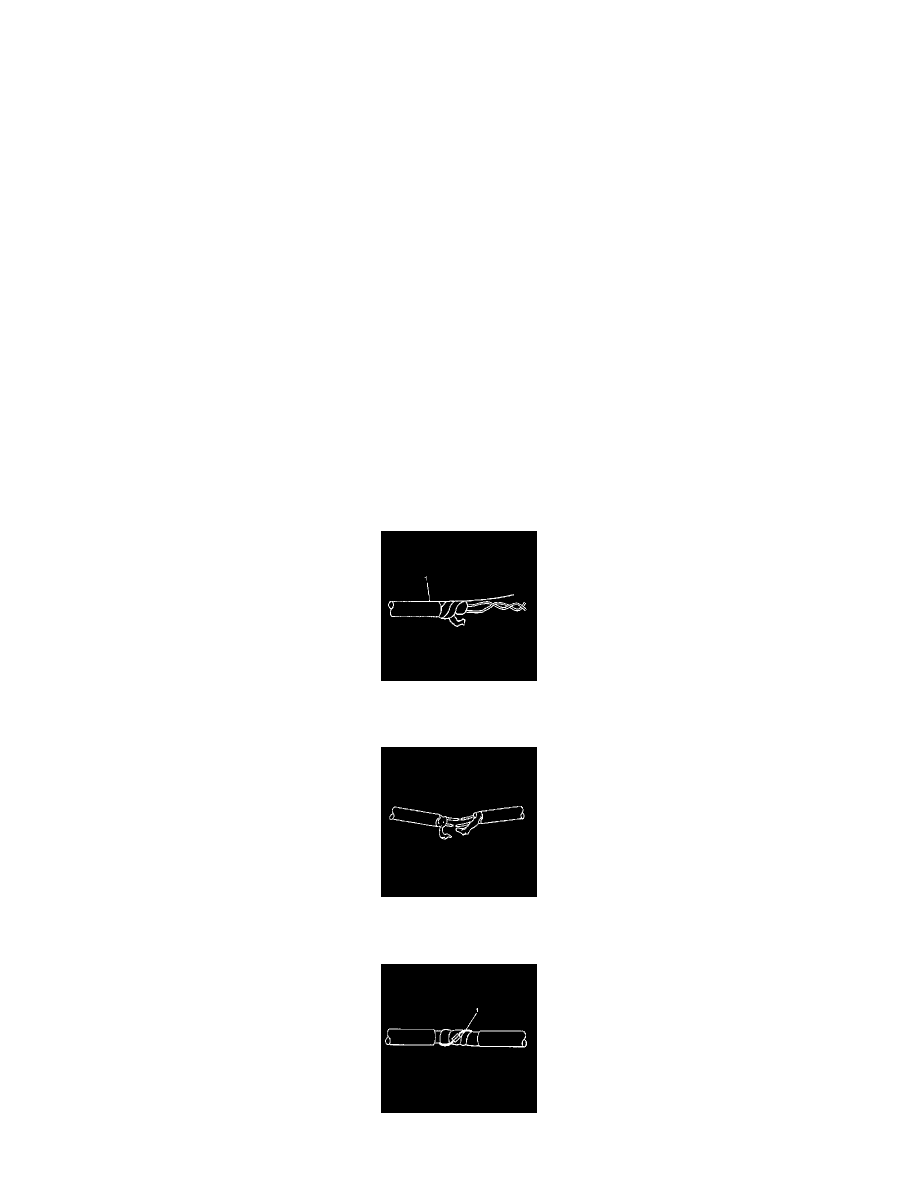i-370 4WD L5-3.7L (2007)

-
Use a cross-linked polyethylene insulated wire for areas where high temperatures are expected.
IMPORTANT:
-
Use cross-linked polyethylene wire to replace PVC, but do not replace cross-linked polyethylene with PVC.
-
Cross-linked polyethylene wire is not fuel resistant. Do not use to replace wire where there is the possibility of fuel contact.
4. Strip the insulation.
-
Select the correct size opening in the wire stripper or work down from the largest size.
-
Strip approximately 7.5 mm (5/16 in) of insulation from each wire to be spliced (1).
5. Select the proper duraseal splice sleeve (2) and the required crimp nest tool. Refer to the Crimp and Seal Splice Table.
6. Place the duraseal splice sleeve in the J-38125-8 (GM P/N 12085115) crimp tool nest so that the crimp falls at point 1 on the splice.
7. Close the hand crimper handles slightly in order to hold the duraseal splice sleeve firmly in the proper crimp tool nest.
8. Insert the wires into the duraseal splice sleeve until the wire hits the barrel stop. The splice sleeve has a stop in the middle of the barrel in order to
prevent the wire from passing through the splice (3).
9. Close the handles of the J-38125-8 (GM P/N 12085115), until the crimper handles open when released. The crimper handles will not open until
the proper amount of pressure is applied to the splice sleeve.
10. Shrink the insulation around the splice.
-
Using the heat torch, apply heat to the crimped area of the barrel.
-
Gradually move the heat barrel to the open end of the tubing.
-
The tubing will shrink completely as the heat is moved along the insulation.
-
A small amount of sealant will come out of the end of the tubing when sufficient shrinkage is achieved.
Splicing Twisted or Shielded Cable
SPLICING TWISTED OR SHIELDED CABLE
Twisted/shielded cable is used in order to protect wiring from electrical noise. Two-conductor cable of this construction is used between the radio and
the Delco-Bose(R) speaker/amplifier units and other applications where low level, sensitive signals must be carried. Follow the instructions below in
order to repair the twisted/shielded cable.
1. Remove the outer jacket (1). Use care not to cut into the drain wire of the mylar tape.
2. Unwrap the tape. Do not remove the tape. Use the tape in order to rewrap the twisted conductors after the splice is made.
3. Prepare the splice. Untwist the conductors and follow the splicing instructions for copper wire. Staggering the splices by 65 mm (2.5 in) is
recommended.
4. IMPORTANT: Apply the mylar tape with the aluminum side inward. This ensures good electrical contact with the drain wire.
